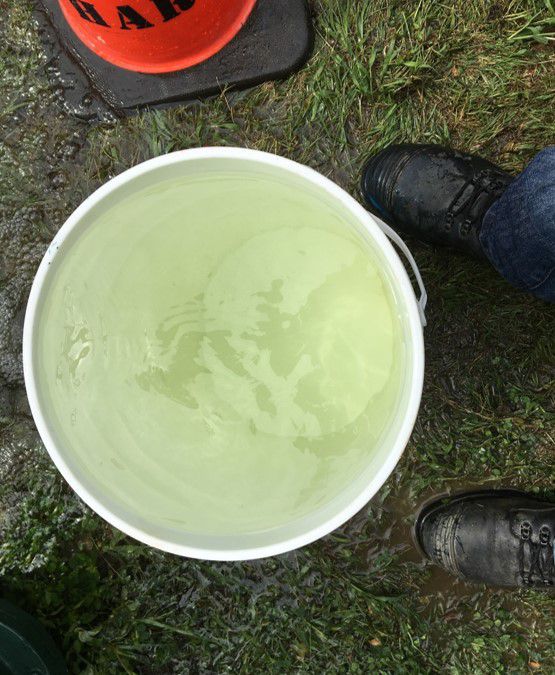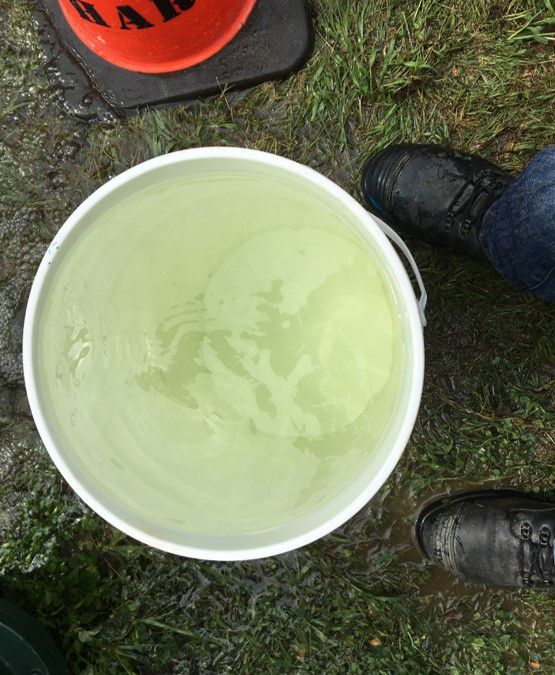CLEVELAND — Late August and early September can bring trouble for water treatment plants as Lake Erie suffers from hypoxia. Cleveland Water Commissioner Alex Margevicius explained how long this issue has been happening at their plant.
“This plant, three of the last four summers, (has) had a problem with hypoxic water,” he said.
Hypoxia is water that is extremely low in oxygen, which therefore decreases pH level. Water can then pull metals from the bottom of the lake, such as iron and manganese. If this kind of water gets into water intake, it has the potential to change the color of the water into a brown or yellow color. Margevicius said this water is safe to drink, but it does not look appetizing.

Hypoxic water. (Katie Priefer/Spectrum News 1)
“We don’t want any aesthetic problems with our water, either. We want to deliver the whole package,” he said.
Hypoxic water is hard to treat in plants, and Cleveland Water’s Nottingham water treatment plant sees the most of this kind of water. Margevicius explained what they do to try and treat this issue.
“One of the first steps in the water treatment process is adding what we call oxidants. In this case, potassium permanganate, that helps deal with a lot of the organic material that’s in the lake, and that’s also where we would increase the dosage if we had a hypoxic water incident,” he said.
Studies revealed that if water intakes were raised, so that water treatment plants received water that’s higher in the lake, then it could help cure this problem. Cleveland Water has a $2 million project in place to change one of their intakes. Margevicius said that this should help the hypoxia problem.
“So we have good confidence that by raising the intake sufficiently, we’ll keep that water that’s near the bottom of the lake from getting into the intake going into the future,” he said.
The water intake, that’s in Lake Erie, is currently 10 feet in height and is going to be raised another eight feet. Cleveland Water hopes this project is finished by next summer.




